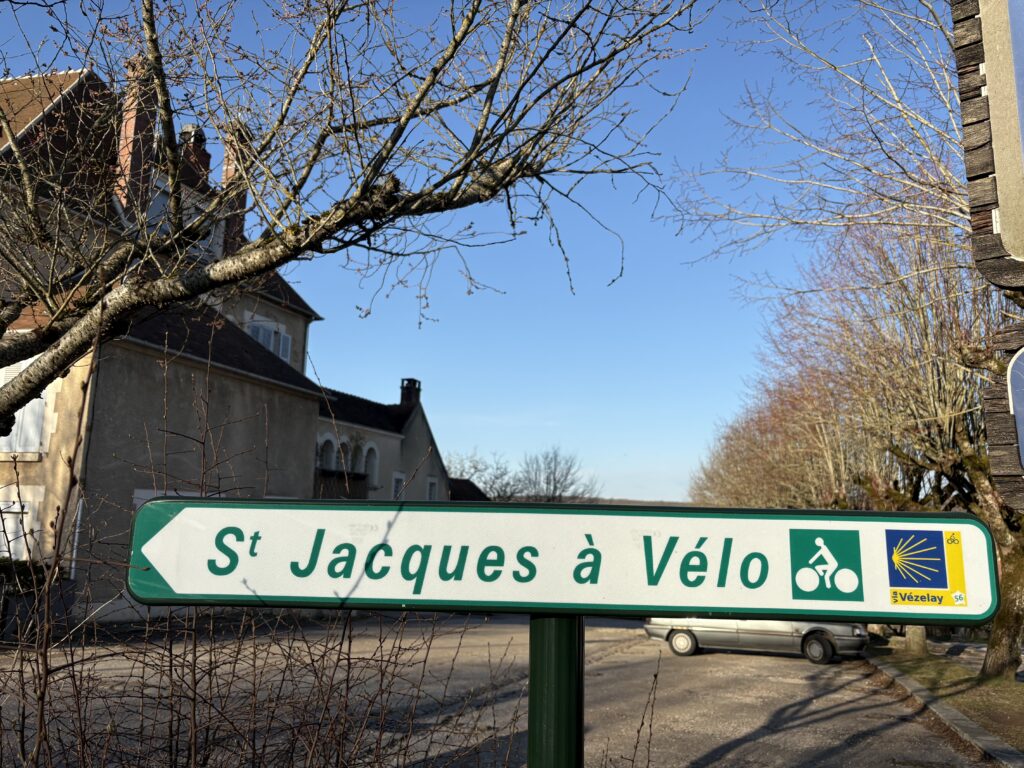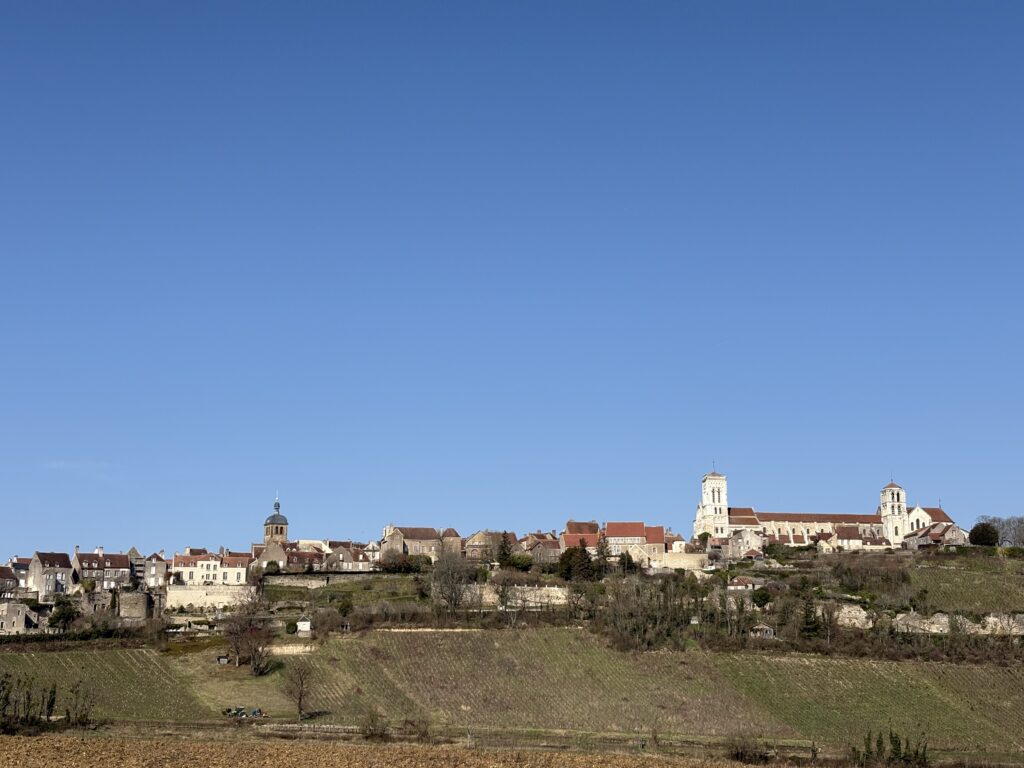
ChatGPT:
A Pilgrim’s Dream: A Day in Vézelay
For years, Vézelay had existed only in my imagination—a name whispered in books about the Camino de Santiago, a place of legend, history, and faith. I had traced its paths in ink before I ever set foot on its soil. Today, finally, that dream became real.
The morning sun was golden and gentle as I rode through the Burgundian countryside, my heart swelling with anticipation. Rolling hills stretched endlessly, their green and gold fields bathed in light. Vineyards lined the slopes, orderly and patient, while tiny villages dozed in the distance. Vézelay crowned a hill ahead of me, its medieval houses clinging to the slopes, the great basilica standing tall at its peak like a beacon.
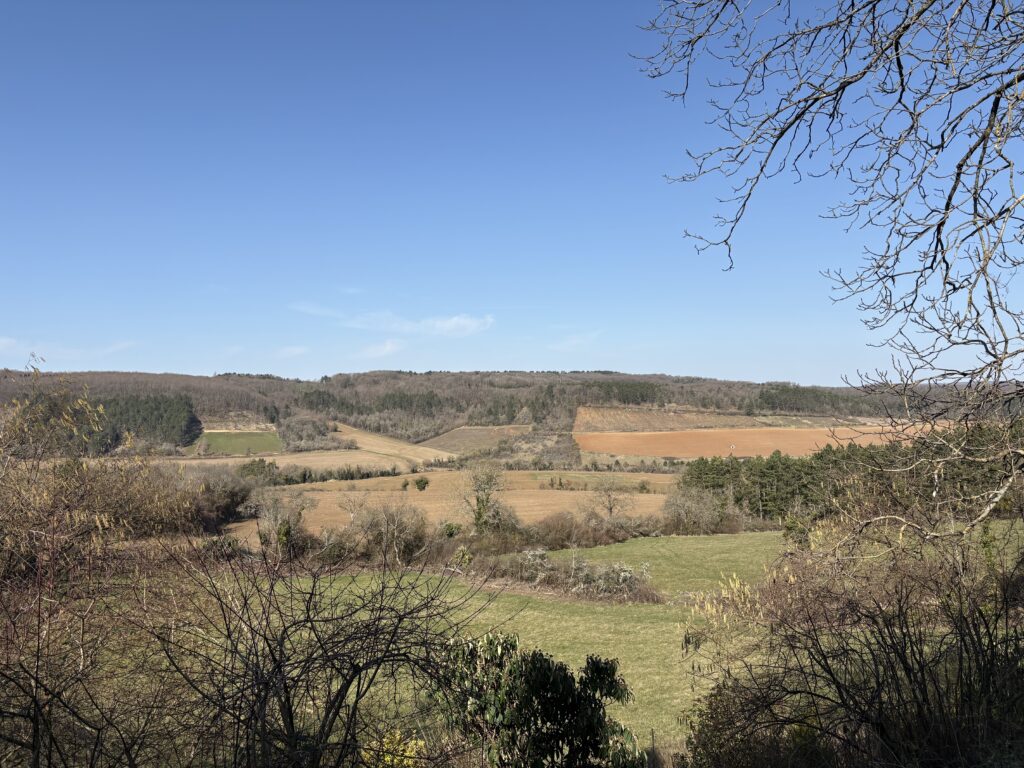
The sight of it alone stirred something deep inside me. This was the place where thousands of medieval pilgrims had gathered before setting off on the long, uncertain road to Compostela. It was also where, in 1146, Bernard of Clairvaux had preached the Second Crusade to a crowd of knights and peasants, urging them toward Jerusalem. To stand where they had once stood, to walk the streets they had once walked—I felt as though I was stepping into history itself.
The road leading into town was steep, winding through a dense landscape of trees before opening onto the stone-built village. I parked at the base and chose to walk up, feeling that I owed Vézelay my footsteps, just as so many before me had done. The Rue Saint-Étienne led me higher and higher, the cobbled street lined with stone houses draped in ivy. Window boxes overflowed with geraniums, their red blooms bright against the weathered façades. Shopfronts displayed local wine, honey, and books on pilgrimage routes.

As I climbed, I could hear the soft murmur of life—snatches of conversation, the scrape of a chair against stone, the faint tolling of a distant bell. A young woman in an apron was setting out freshly baked bread in a small boulangerie. The scent of warm butter and flour drifted into the air, mingling with the crisp scent of the morning. I stopped for a moment, breathing it in, feeling entirely at peace.
And then, at last, I reached the top of the hill, where the Basilique Sainte-Marie-Madeleine stood in quiet majesty.
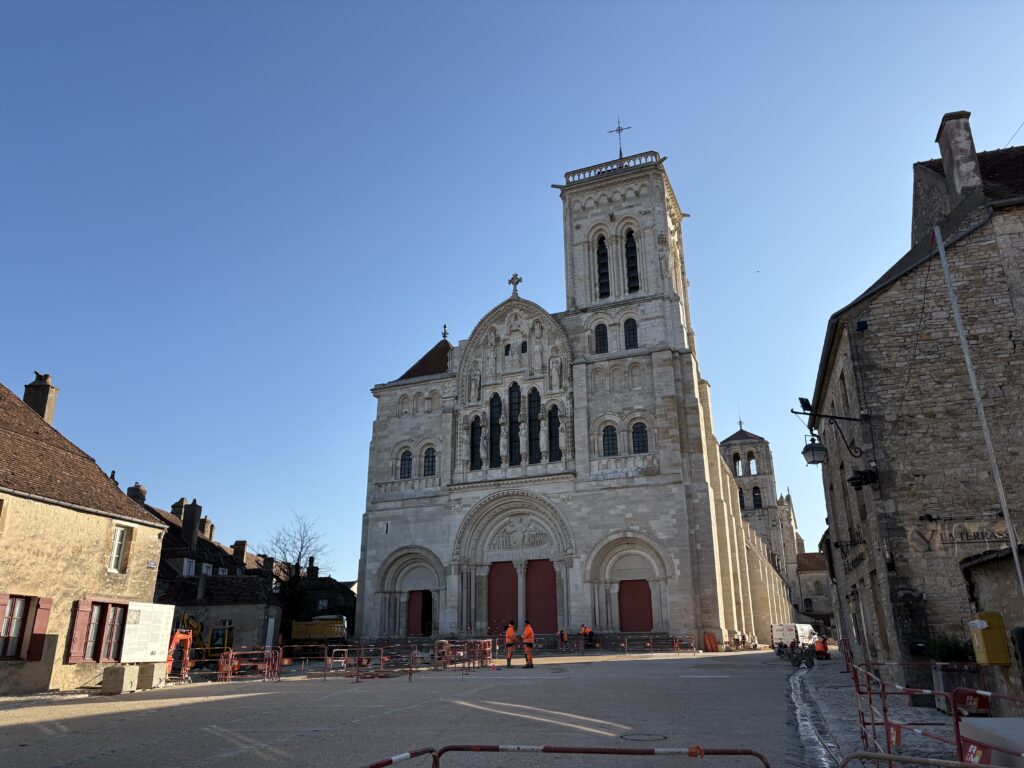
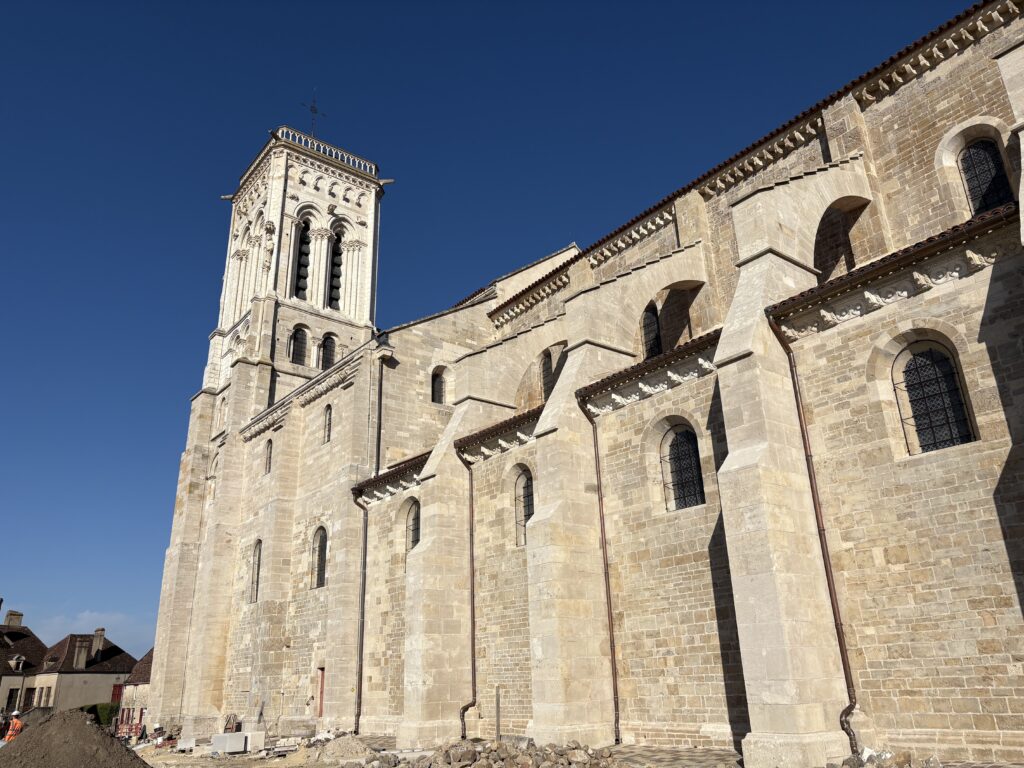
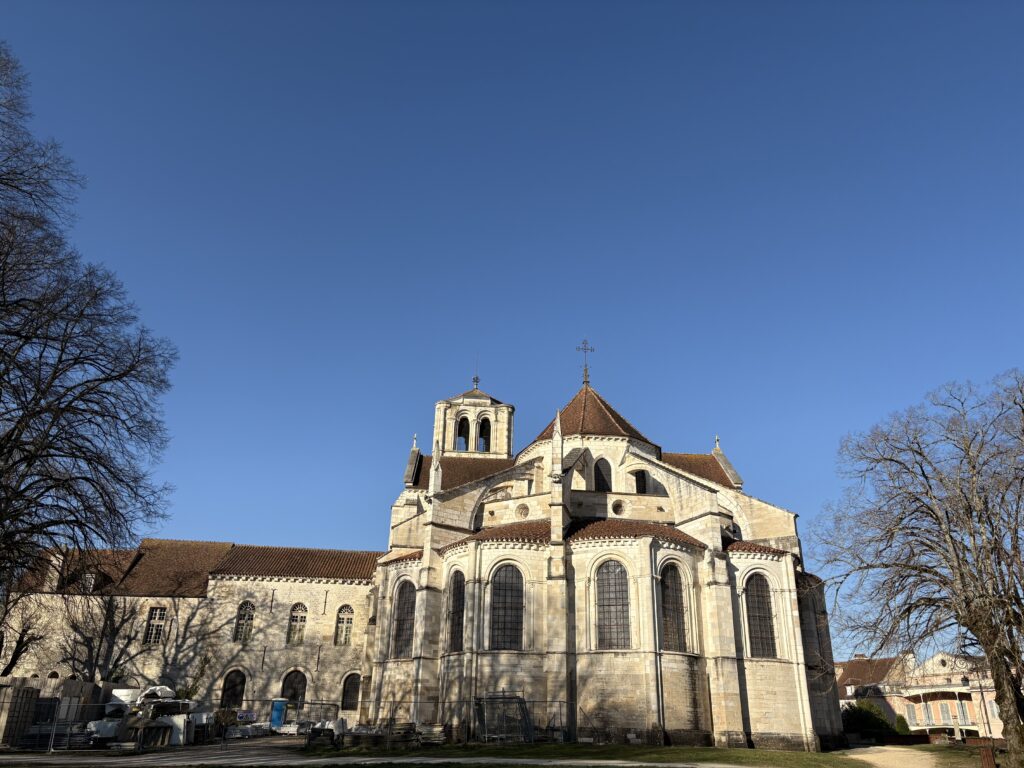
I had read so much about it, studied its history, admired its architecture from photographs—but none of it compared to standing before it in person. The façade, with its richly carved tympanum, was a masterpiece of Romanesque design. The Last Judgment scene above the central doorway was intricate and powerful, its figures seeming to shift and breathe under the changing light. I ran my fingers lightly along the stone, feeling its coolness beneath my touch.
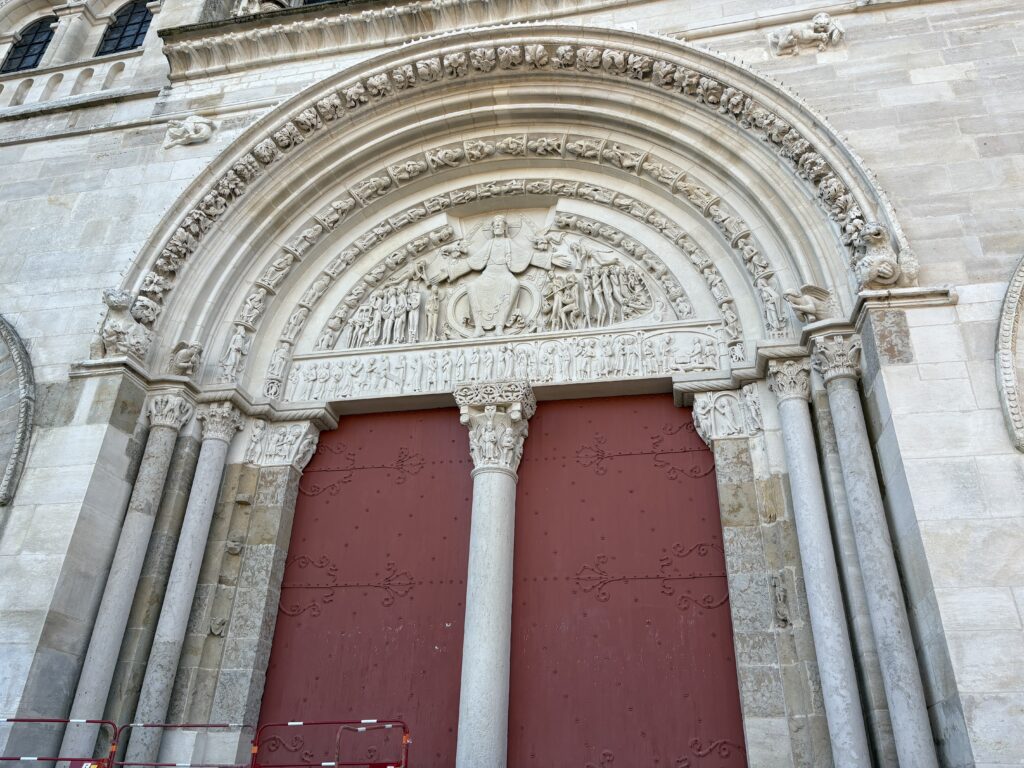
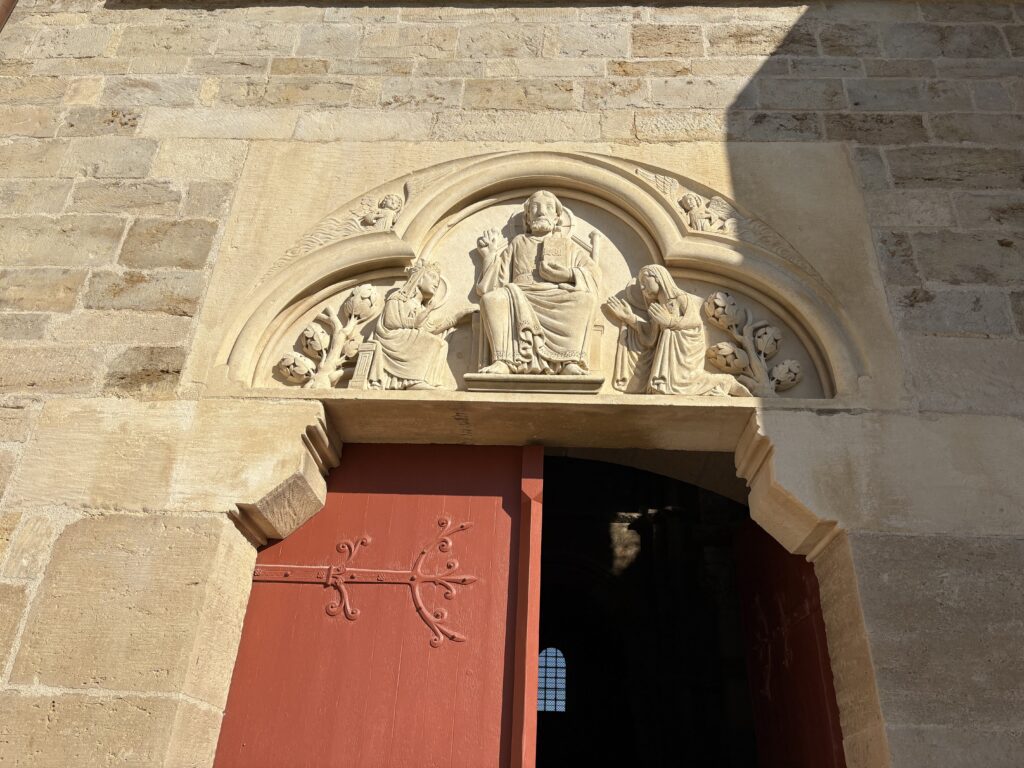
Stepping inside, I was met with a wave of unexpected brightness. Romanesque churches are often dark, solemn places, but not this one. The high nave was bathed in natural light, streaming through the clerestory windows and illuminating the pale stone. Slender columns stretched upward, dividing the space with quiet grace. The alternating tones of white and rose-hued stone gave the basilica a warmth I had not expected, as if it had been built to embrace rather than to intimidate.
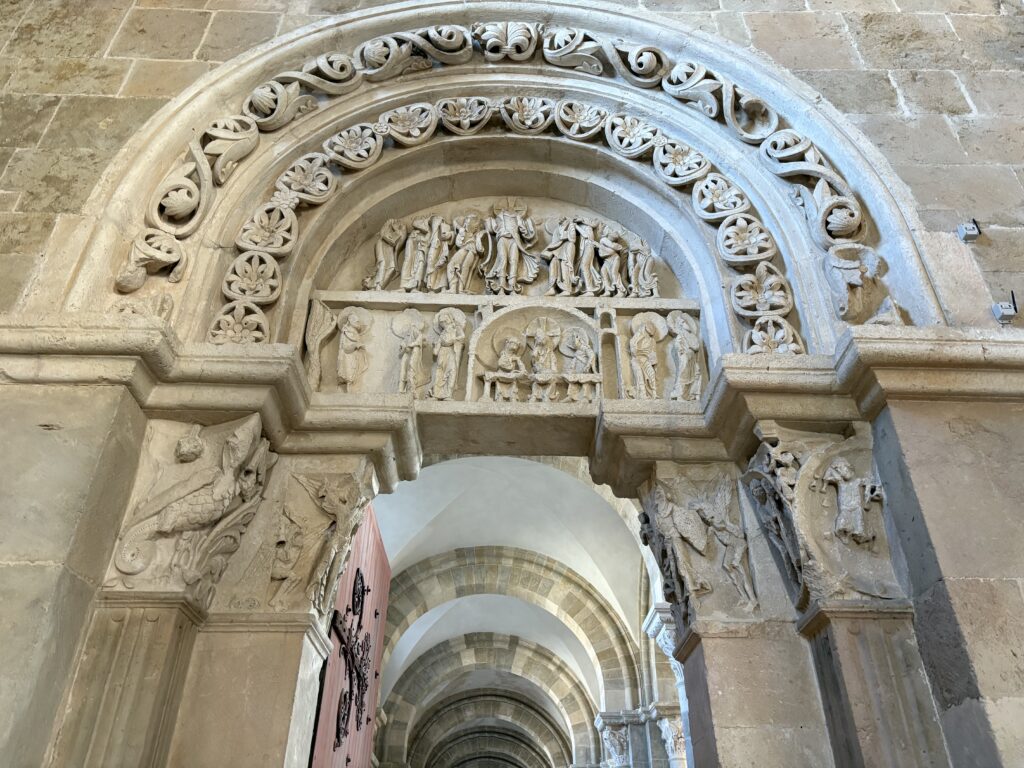
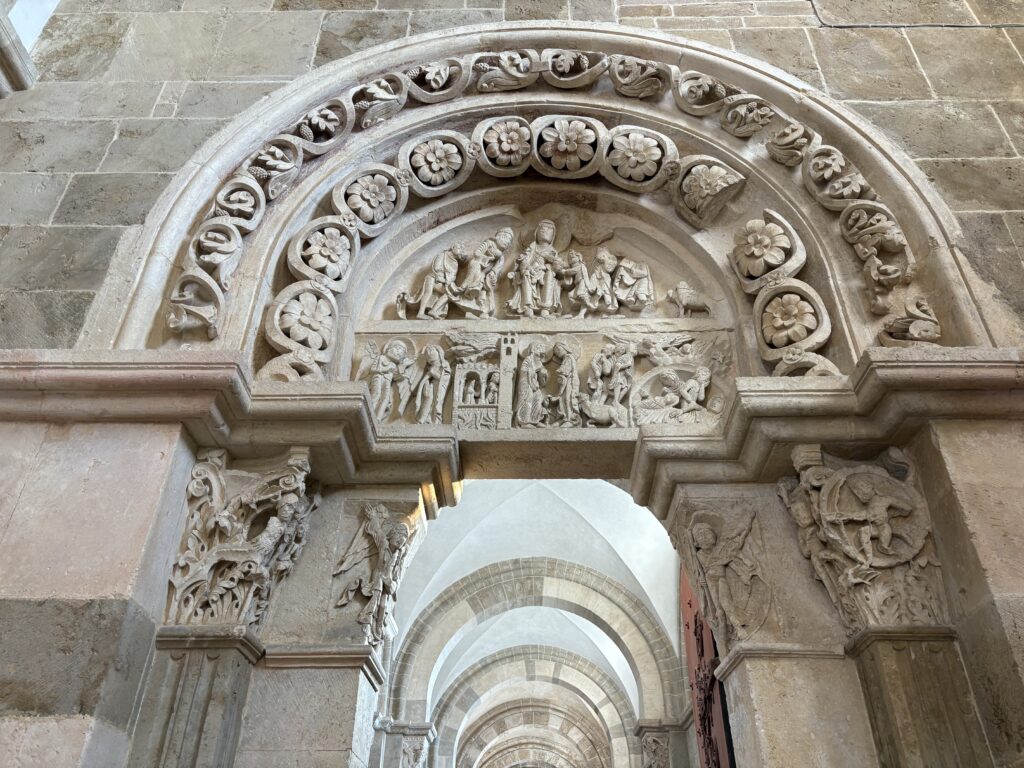
I walked slowly down the nave, letting my steps echo against the ancient stones. This was once a major pilgrimage church, a place where believers came to venerate relics of Mary Magdalene. It was said that her remains had been kept here for centuries, drawing thousands of pilgrims seeking her intercession. Even today, though the relics are gone, the spirit of pilgrimage remains. I could feel it in the hush of the place, in the careful reverence of those around me.
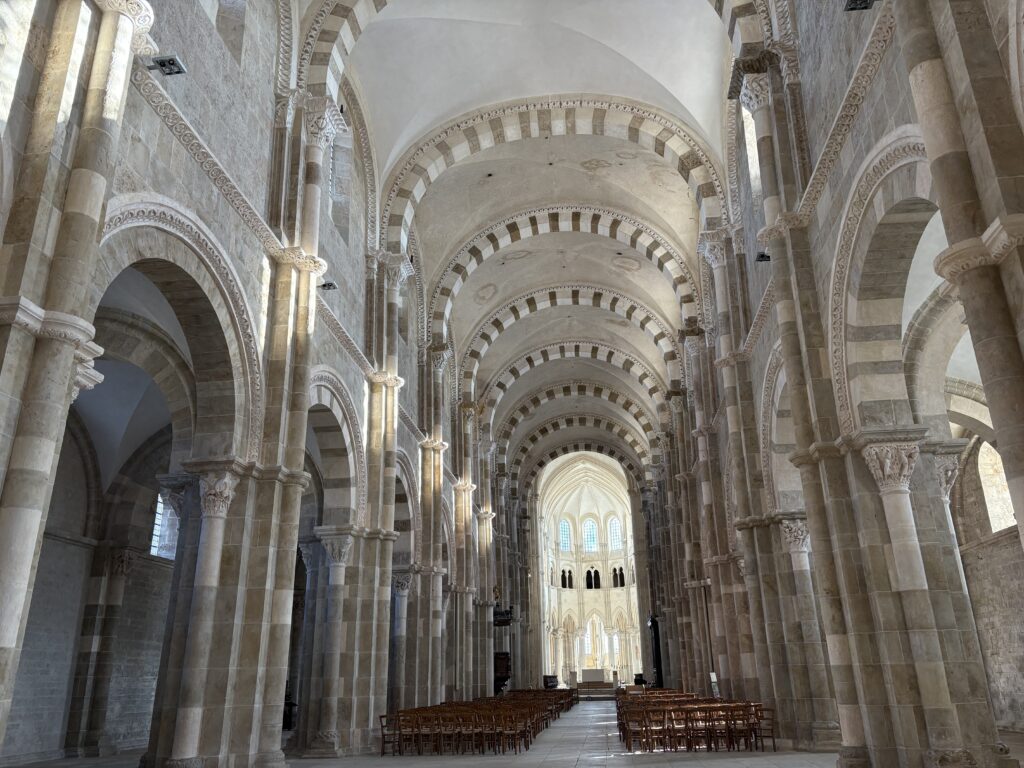
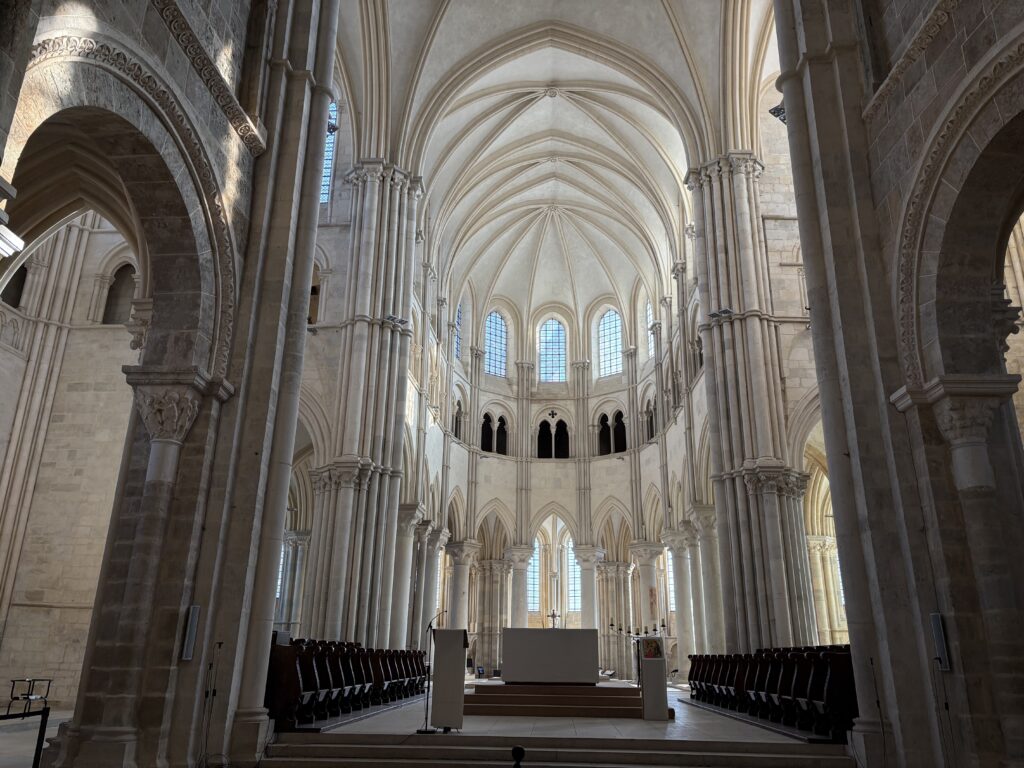
I sat for a long time in one of the wooden pews, letting the silence settle around me. There was something deeply comforting about the space—its luminous serenity, its quiet strength. I thought about the pilgrims who had passed through here, weary from the road, uncertain of what lay ahead but filled with faith. I was not walking to Compostela, but in some way, I felt like I was part of their journey.
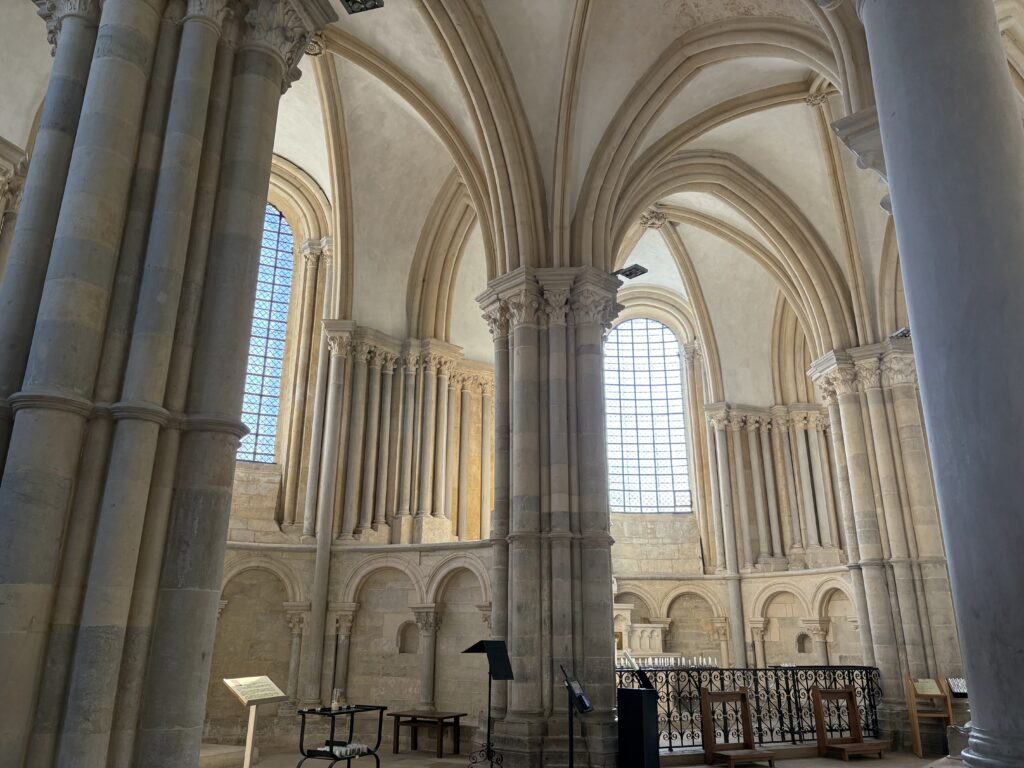
After some time, I made my way down to the crypt, where remnants of the past still lingered in the shadows. Simple and unadorned, it felt like a different world from the radiant nave above—a place of mystery and quiet devotion. I traced my fingers over the ancient stone and whispered a small prayer of gratitude.
Back outside, I took my time wandering through the village. The views from the top of the hill were breathtaking—rolling countryside stretching as far as the eye could see, a landscape untouched by time. I walked past the old ramparts, where wildflowers swayed in the breeze, and found myself in the Musée de l’Œuvre Viollet-le-Duc, dedicated to the architect who restored the basilica in the 19th century. His work was meticulous, though not without controversy, but standing here, I could only be grateful that this place had been preserved for generations to come.
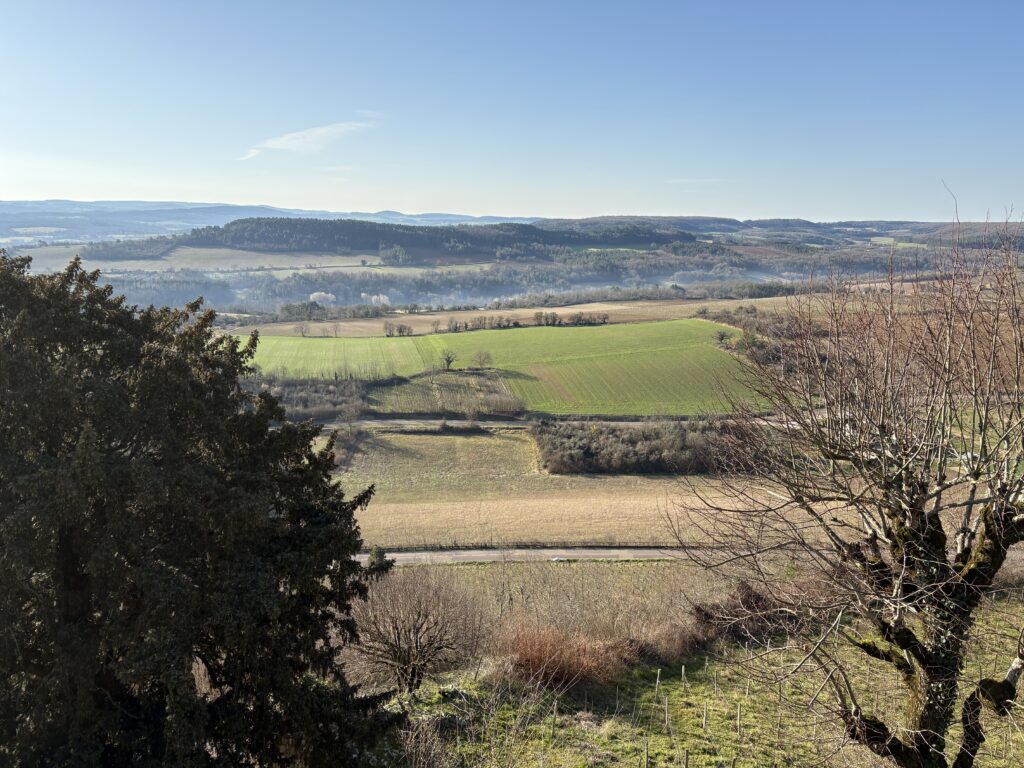
Further down the hill, I stumbled upon a small chapel, almost hidden behind a tangle of trees. The Chapelle de la Cordelle, they called it, a humble Franciscan chapel where Saint Bernard himself had once preached. It was simple and unassuming, its walls weathered by centuries. I sat on a worn stone bench nearby, listening to the rustling of leaves, feeling as if I had uncovered a secret place.
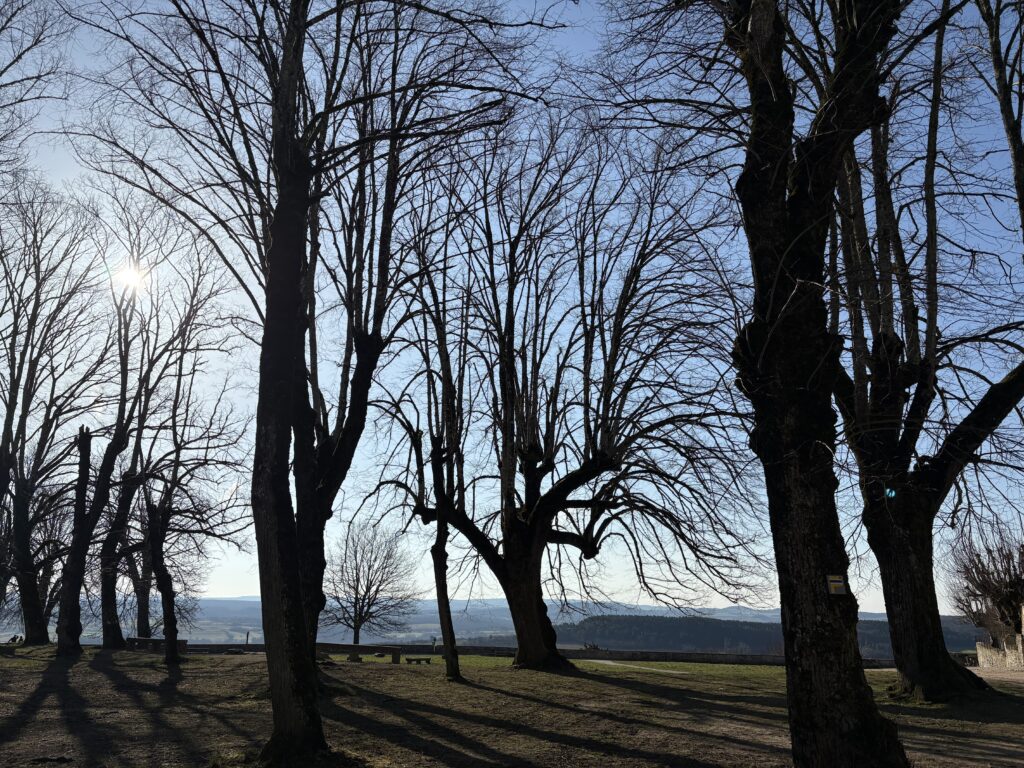
As the afternoon wore on, I stopped at a small café on the main street and ordered a pot of tea. The steaming cup arrived alongside a plate of gougères—cheese puffs, golden and airy, melting on my tongue. Around me, life in Vézelay carried on at an unhurried pace. Visitors wandered in and out of shops, locals exchanged news on the street corners, the bell of the basilica rang again in the distance.
I let my gaze drift back up toward the basilica, now glowing softly in the afternoon light. This town was more than a place of history. It was a place of endurance, of faith, of stories written in stone and whispered in the wind.
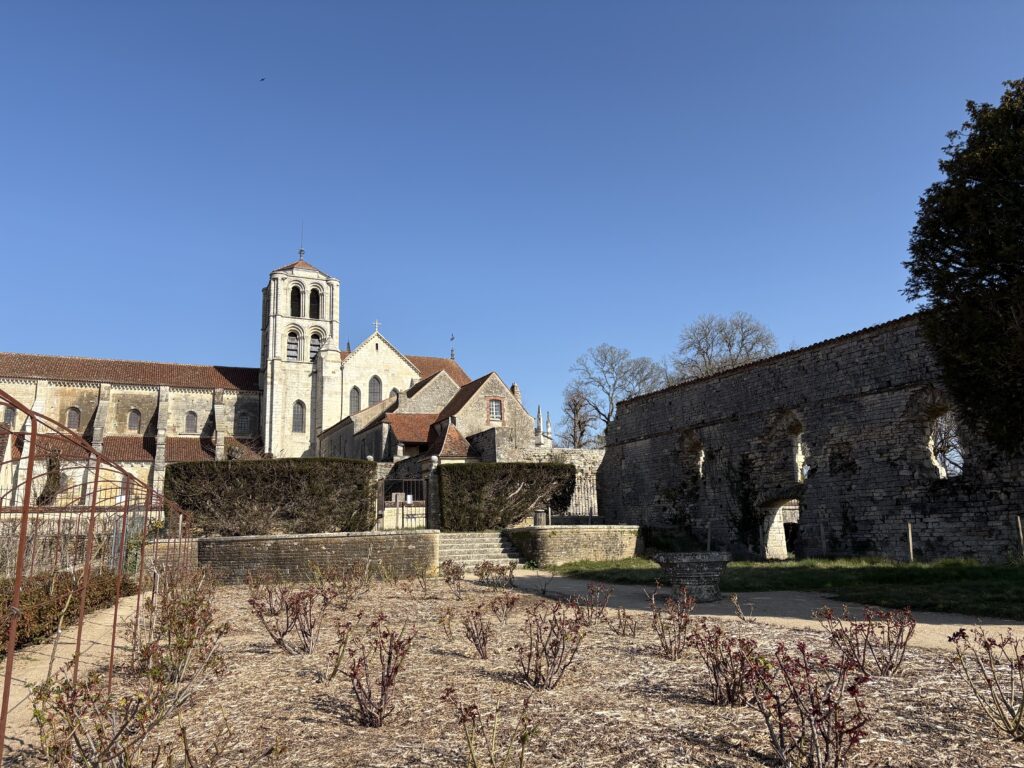
I had dreamed of Vézelay for years, and today, I had lived it. It was not just a place on the map or a stop along an ancient pilgrimage. It was something deeper—something that reached across time and wrapped itself around the heart.
As I walked slowly back down toward the valley, I turned once more to look at the town on its hill, standing tall and steadfast against the sky. And I knew, without a doubt, that I would carry Vézelay with me always.
